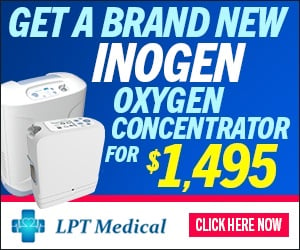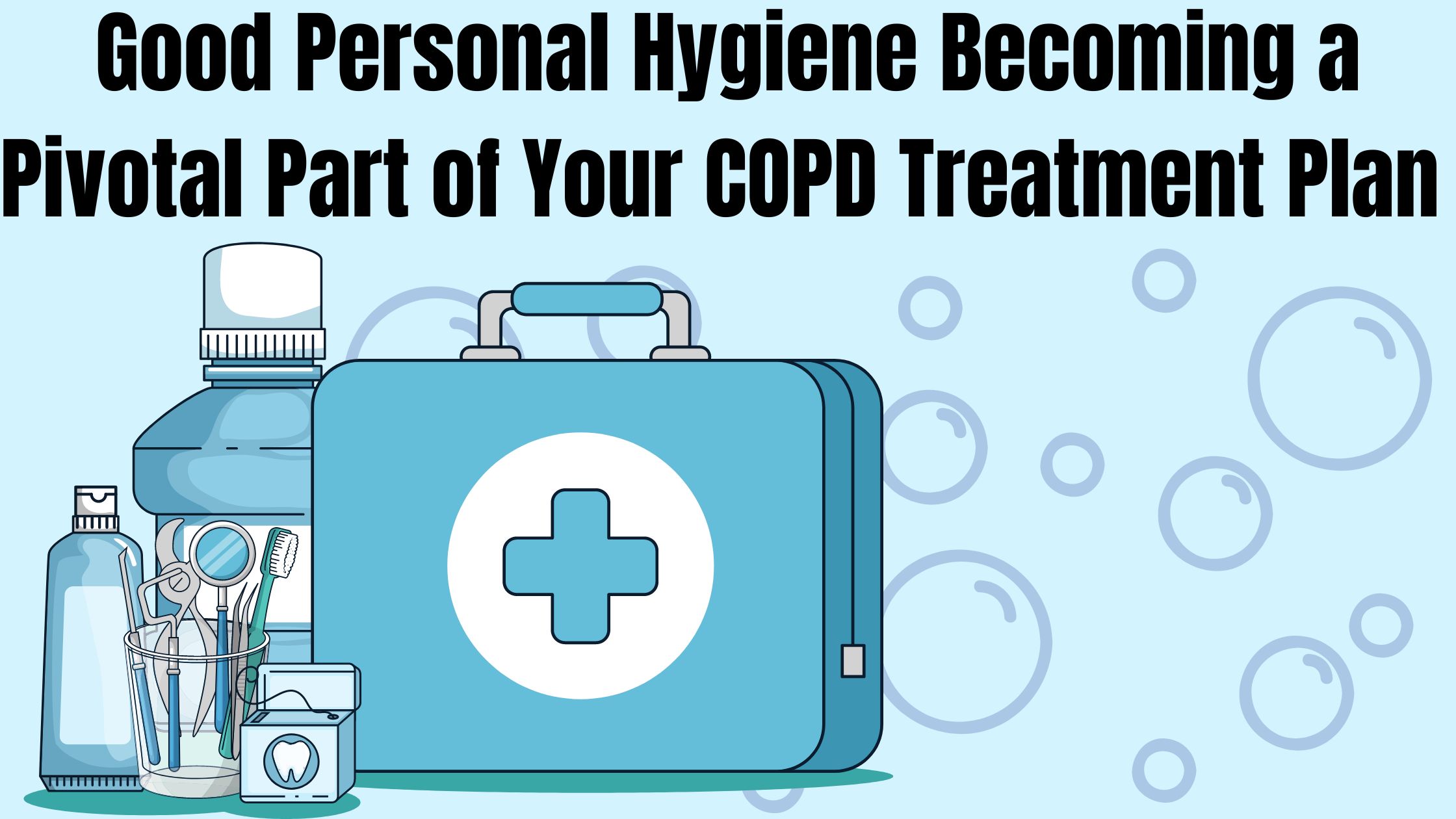
Personal hygiene is one of those things that everyone knows is important, but few actually take seriously enough. For most people, hygiene is simply a routine part of life, not something they go out of their way to think about pay attention to.
But if you suffer from COPD, it's important to make good personal hygiene a top priority in your daily routine. Proper hygiene is your very first line of defense against illnesses and dangerous COPD exacerbations that can make your disease even worse.
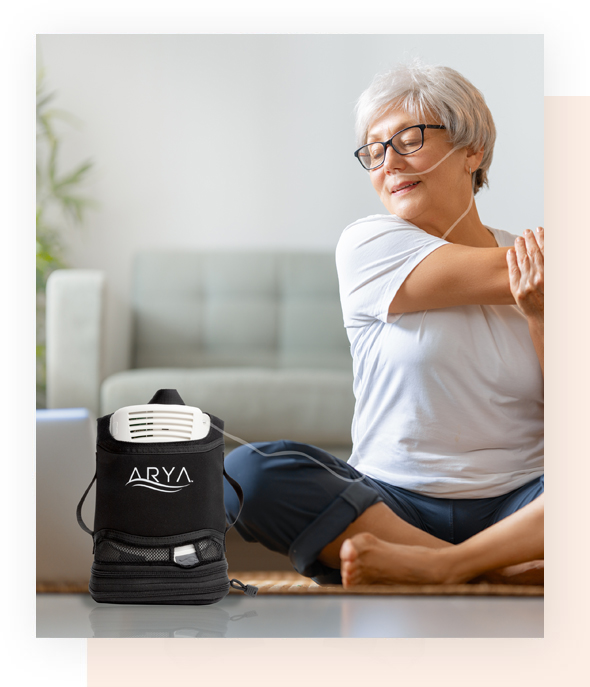
LPT Medical's newest and most impressive portable oxygen concentrator, the ARYA P5 portable oxygen concentrator
However, practicing good personal hygiene takes more effort than most people think. Doing it right takes extra time out of the busy day, and it's very tempting to cut corners to save time.
That's why everyone should take the time to review the important components of good personal hygiene now and then. If you have COPD, then you have even more at stake, and you should take extra care to learn all the proper techniques.
In this post, we're going to show you what good personal hygiene looks like and how it can help you protect your lungs and manage your COPD. This guide will discuss a variety of important hygiene issues, both general and COPD-specific, and help you learn the skills you need implement good hygiene practices in your everyday life.
Why Hygiene is So Important for People with COPD
Most people understand the basics of good hygiene, but not everyone is great at practicing it consistently. Even so, imperfect hygiene is not usually a problem for most healthy adults.
However, good personal hygiene is much more important for people who suffer from COPD. The disease suppresses patients' immune systems, which makes them particularly vulnerable to disease-causing germs like viruses and bacteria.
Even worse, it can be very dangerous to get even a little bit sick if you have COPD. Respiratory illnesses, in particular, can wreak havoc on your lungs and immune system, making it much more difficult to breathe and control other COPD symptoms.
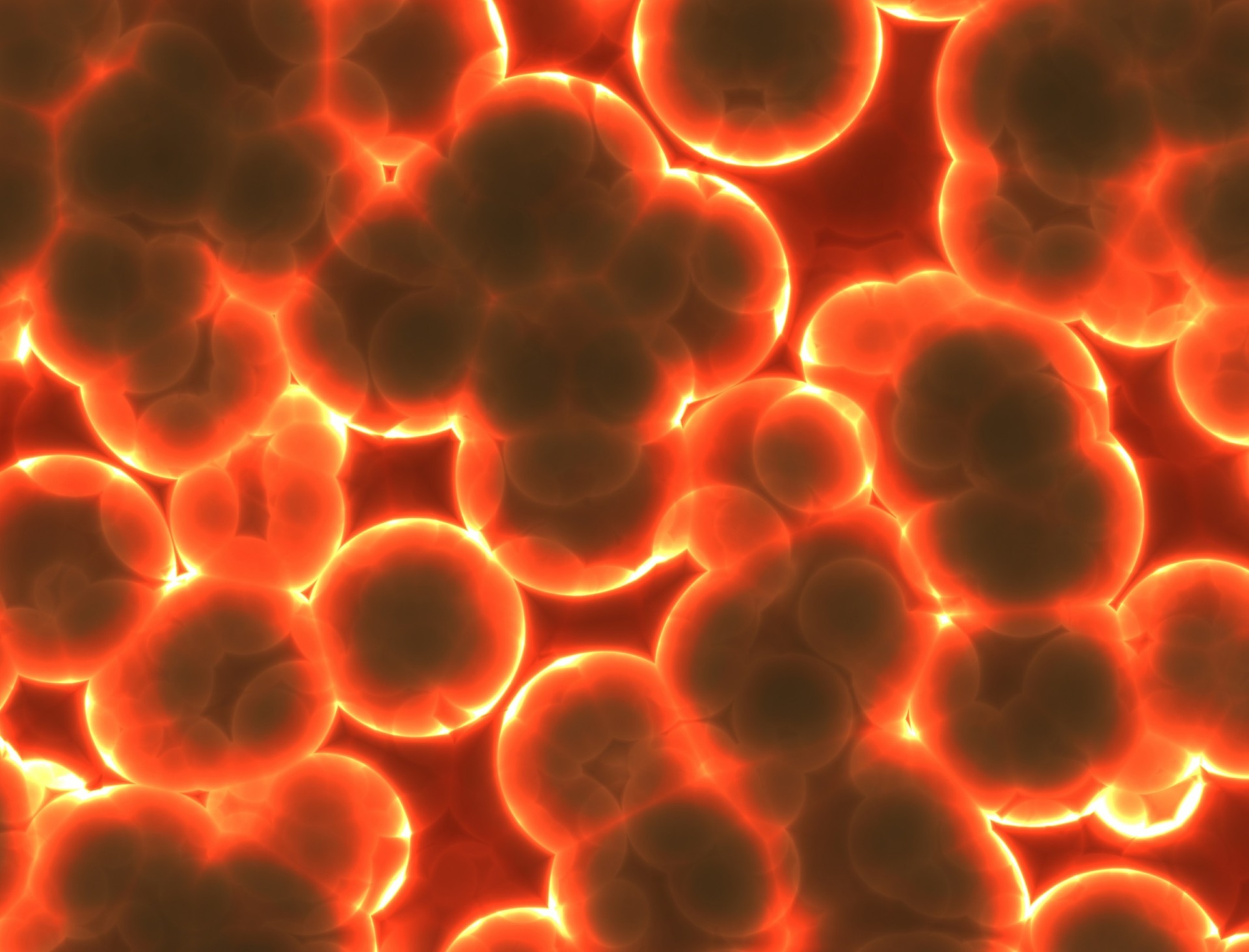
That's why practicing good hygiene is so vital; it protects you from the germs, bacteria, funguses, and respiratory irritants that cause you to get ill. You can't always control whether or not you get sick, but practicing good personal hygiene is one of the few effective things you can do to reduce your risk.
Even minor viruses like the common cold can worsen breathing problems significantly and permanently damage your lungs. Because of blockages and narrowing in your airways, COPD also makes it harder to flush viruses and bacteria out of your respiratory tract.
This significantly raises your risk for secondary lung infections like pneumonia if you get sick. COPD also makes it more difficult to recover from illnesses and infections.
In this way, COPD not only causes you to get sick more often, but also causes you to stay sick for a longer period of time. Unfortunately, one of the consequences of staying sick longer is an increased probability of minor illnesses causing serious infections and permanent damage to your lungs.
In the most serious cases, getting sick when you have COPD can lead to respiratory failure, hospitalization, and even death. That is why it is so important to practice impeccable hygiene if you suffer from COPD.
The Benefits of Good Hygiene
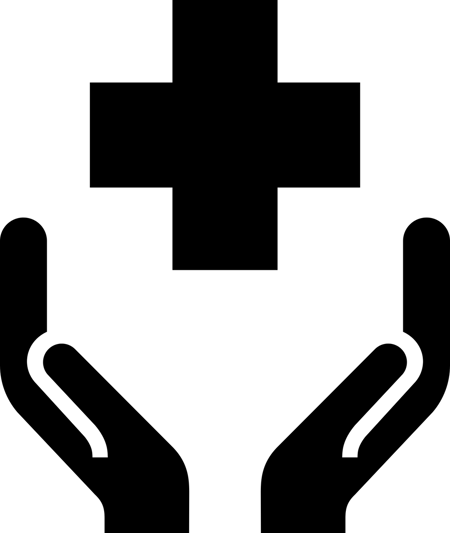
The main benefit of good hygiene is a significantly reduced chance of getting sick. That's because, when you practice good hygiene, you prevent a myriad of disease-causing pathogens like viruses, bacteria, and parasites from making it into your body.
Good personal hygiene is also good for those around you because it prevents you from spreading germs and sicknesses to other people. By practicing good hygiene, you can help protect other people with immune-suppressing diseases like COPD and prevent them from getting illnesses that could potentially threaten their lives.
Along with these physical benefits of good hygiene, there are social and psychological benefits as well. When you keep yourself clean, healthy, and groomed, you are likely to feel more confident and capable in other ways, as well.
Here are some of the main benefits of healthy hygiene habits:
- Improved overall health
- Reduced risk of disease and infections
- Reduced exposure to allergens and other respiratory irritants
- Reduced risk of COPD exacerbations
- Reduced risk of hospitalization
- Reduced risk of spreading germs and illnesses to others
- A cleaner, healthier living environment
- Improved confidence, self-image, and self-esteem
- Other people see you as more healthy, desirable, and attractive when you have good hygiene
What Does Good Personal Hygiene Look Like?
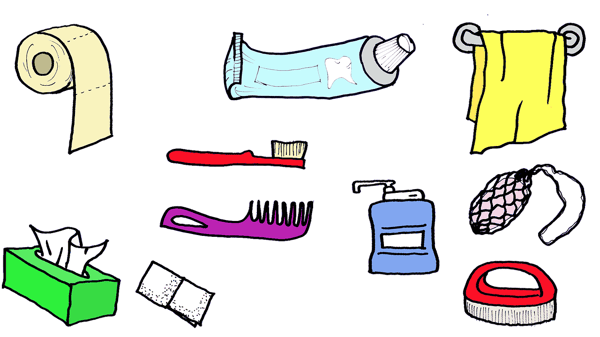
You probably already know the basics of good hygiene like bathing and washing your hands. But there's also a good chance you don't know, or have forgotten, the details of what good hygiene entails.
Still, knowing the basics works well enough for most people most of the time. At worst, most healthy adults will only get a mild illness every so often if they expose themselves to germs.
However, living with COPD means you can't cut any corners without putting your health in serious risk. That means you need to go out of your way to practice impeccable hygiene, even if you've gotten away with an average amount of effort so far in your life.
But to do that, you need to understand what good hygiene is and exactly what you have to do to practice it. Fortunately, practicing good hygiene is relatively easy to do and even simpler to learn.
The basics of good personal hygiene include:
- Knowing when to wash your hands
- Knowing how to wash your hands properly
- Knowing how to prevent yourself from spreading germs to others when you are sick
- Knowing how to avoid transferring germs to your body in public places
- Knowing how to practice good dental hygiene
- Knowing how to clean your body and your clothes to prevent germ buildup
How to Practice Good Hygiene to Improve Your COPD
In this guide, we're going to give you a refresher course on how to practice good personal hygiene. We'll also address a variety of personal hygiene issues and challenges that affect people with COPD specifically.
In these next sections, we will go through each important hygiene issue step by step so you can learn the proper techniques. We'll also give you tips for how to practice good hygiene every day and fit important hygiene practices into your daily routine.
Learning the tips and techniques we explain in this guide will help you ensure that you are doing everything you can to protect yourself from sickness and disease. That way, you can live your life more safely, more confidently, and with a reduced risk of serious COPD complications.
Wash Your Hands Often
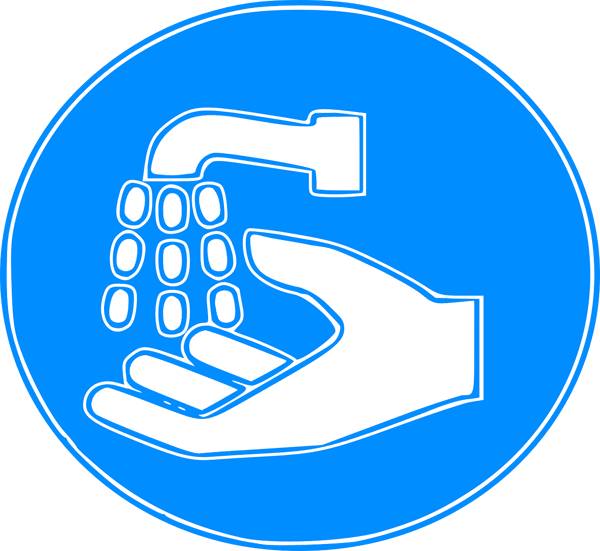
Even though washing your hands might seem like obvious advice, it is so essential to personal hygiene that it's still important to review. It is the first step to practicing good hygiene and one of the most effective ways you can protect yourself from disease.
Unfortunately, most people are not as diligent about hand-washing as they should be, even knowing how important it is. Many people remember to wash their hands before eating or going to the bathroom, but get lazy or forget to do it in other situations.
Another problem is that most people don't take enough time to wash their hands thoroughly enough, which makes their hand-washing less effective. As a result, their hands may still harbor harmful bacteria even after washing up.
How to Wash Your Hands the Right Way
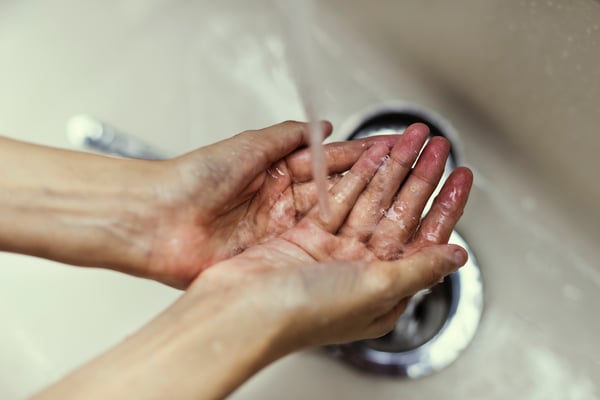
If all you do is rub your hands together with soap while giving them a quick rinse under the faucet, then you're not washing them well enough. In fact, if it takes you less than a full twenty to thirty seconds (count it!), then you probably need to correct your technique.
Here is a quick overview of proper hand-washing technique, as recommended by the CDC:
- Use clean, running water to rinse and wet your hands before applying soap.
- Rub the soap between your hands until it forms a lather.
- Scrub your hands for at least twenty seconds, getting your nails, wrists, and between your fingers.
- Rinse off all the soap under clean, running water.
- Dry your hands off on a clean towel.
To wash your hands properly, you need to make sure you scrub every part of your hands thoroughly with soap, including your fingers, fingernails, palms, wrists, between your fingers, and the backs of your hands. Any kind of regular, non-antibacterial soap will do the trick, including bar soap, liquid soap, and foaming soaps.
You may need to wash the skin above your wrists and further up your forearms after cleaning, washing dishes, or doing anything else that is likely to fling bacteria around. If your hands are especially dirty, you should also use a nail brush to scrub around and underneath your fingernails to remove excess dirt and grime.
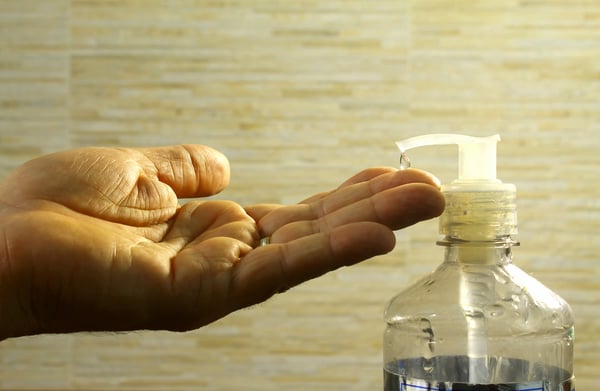
Here are some more tips for more effective and hygienic hand washing:
- Avoid antibacterial soaps and hand sanitizers: Using antibacterial soaps and hand sanitizer is almost never necessary because regular soaps and sanitizers are effective. Additionally, anti-bacterial soaps are bad for the environment, and may even be bad for your health.
- Keep your hand towels clean and dry: If your hand towel stays moist for too long, it creates a perfect environment for mold and bacteria to grow. Let your hand towels dry thoroughly between uses and wash them regularly, especially if you notice a bad or musty smell.
- Don't re-contaminate your hands: After you get your hands all clean, you don't want to have to start over again. That's why you should be careful not re-contaminate them right away by touching a dirty faucet or door handle on your way out of the bathroom. When using a public bathroom, cover your hand with a tissue if necessary to avoid touching dirty public surfaces.
To see proper hand-washing technique in action, check out this video from the CDC.
When to Wash Your Hands
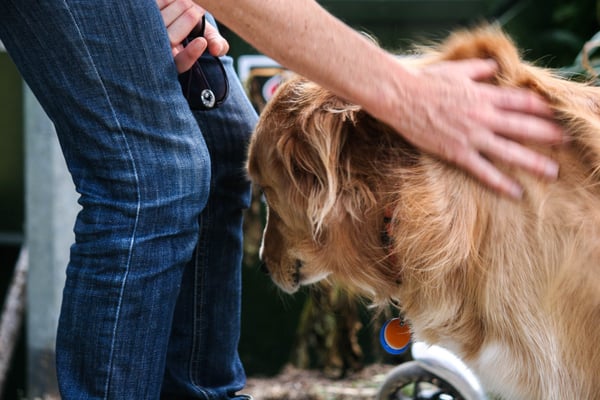
You probably already know that you should wash your hands before and after eating and after you use the bathroom. However, there are many other situations that call for thorough hand-washing, and some are less obvious than others.
In general, you should wash your hands after completing any activity that puts you in contact with germs. That includes anything that involves handling dirty items, touching public surfaces, or coming into contact with someone who is sick or injured.
Here is a more complete list of situations in which you should wash your hands:
- Before and after handling food
- Before and after eating
- Before and after treating a wound
- Before and after touching your face, especially your eyes, nose, and mouth
- Before and after caring for a sick person
- After sneezing, coughing, or blowing your nose
- After using the bathroom
- After changing a diaper or handling pet waste
- After touching a pet or other animal
- After touching another person
- After handling garbage or waste
- After touching a public item or surface (like a public pen or ATM)
- After smoking
Use Hand Sanitizer
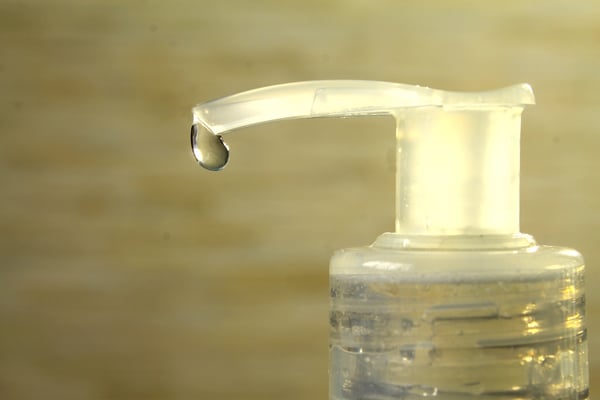
Sometimes, you won't have access to a sink when you need to wash your hands. In case this happens, it's a good idea to keep hand sanitizer with you whenever you leave the house.
For the best protection, you should always use alcohol-based hand sanitizers instead of antibacterial ones. To be effective, your hand sanitizer should contain no less than 60 percent alcohol.
These hand sanitizers can kill the majority of bacteria and fungi on your hands as well as many viruses. The higher percentage of alcohol the sanitizer contains, the more effective it will be against all kinds of microbes.
However, hand sanitizer only works effectively if you use it right. If your hands are greasy or grimy when you apply hand sanitizer or you wipe the solution off too soon, then you won't get its full protection.
But even though it can be good in a pinch, hand sanitizer is not a good substitute for hand-washing in all cases. Using hand sanitizer is not nearly as effective as washing your hands, and you should only use it as a backup for times when hand-washing is not an option.
Here are some tips for using hand sanitizer correctly to protect yourself from illnesses and infections:
- Use hand sanitizer by pouring a dime-sized dollop into the palm of your hand and rubbing the solution thoroughly into your palms, fingers, and the backs of your hands.
- Make sure you don't have dirt, oils, or grime on your hands before applying hand sanitizer, otherwise it may not be effective.
- Once the solution has been absorbed into your skin, let your hands air dry. (Don't wipe your hands off; it should only take a few seconds for the solution to dry on its own.)
- Do not rely on hand sanitizer to clean harmful chemicals like pesticides off your hands.
Bathe Often for Healthy Skin and Lungs
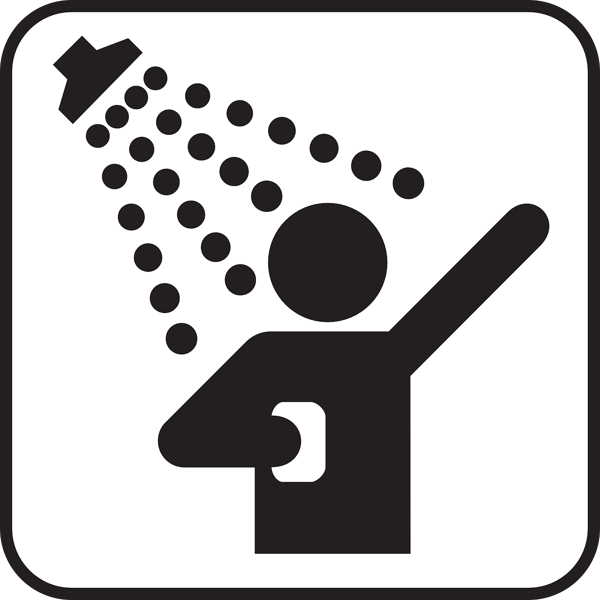
No matter how careful you are to avoid germs, your body inevitably picks plenty of them up from your environment throughout the day. When you go outside, cook, clean, and sweat, you are exposed to all sorts of bacteria, fungi, and other harmful particles that stick to your hair, clothes, and skin.
<


